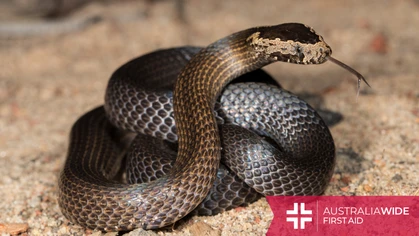How to Treat Cat Scratches

Bites and Stings
 Cats are beloved pets for millions of people worldwide, but sometimes even the most gentle feline can become agitated or scared, leading to scratches.
While cat scratches are usually not serious, they can still be painful and carry the risk of infection.
In this article, we will discuss essential first aid steps to treat cat scratches and minimize the chances of complications.
Cats are beloved pets for millions of people worldwide, but sometimes even the most gentle feline can become agitated or scared, leading to scratches.
While cat scratches are usually not serious, they can still be painful and carry the risk of infection.
In this article, we will discuss essential first aid steps to treat cat scratches and minimize the chances of complications.
Assess the Scratch
The first step is to assess the scratch's severity. Cat scratches can range from superficial to deep. Look for the following signs that may indicate a more severe scratch:- Deep puncture wounds
- Excessive bleeding
- Swelling or redness
- Location of wound
- Signs of infection (pus, warmth, increased pain)
- Embedded foreign objects
Wash Your Hands
Before touching the scratch, make sure to wash your hands thoroughly with soap and water. This step helps prevent the introduction of harmful bacteria to the wound.Clean the Wound
Gently clean the scratch with mild soap and warm water. Avoid using alcohol, hydrogen peroxide, or iodine, as these can be too harsh and delay healing. Rinse the wound gently with copious amounts of clean water, and pat it dry with a clean, sterile cloth.Control Bleeding
Apply pressure to the wound using a clean bandage or cloth to stop the bleeding. If bleeding persists or worsens, seek medical attentionApply an Antiseptic
To reduce the risk of infection, apply an over-the-counter antiseptic solution to the wound. Use a clean cotton ball or swab to apply it gently. This will help kill any remaining bacteria.Apply an Antibiotic Ointment
After applying an antiseptic, you may wish to cover the scratch with a thin layer of antibiotic ointment. This step further reduces the risk of infection and helps with the healing process.Looking to get you First Aid knowledge up to date?
We run certified First Aid courses throughout all major Acustralian citys. Find a location near you.
Protect the Wound
To prevent further irritation and infection, cover the scratch with a sterile bandage or dressing. Change the dressing daily or whenever it becomes dirty or wet. Keeping the wound clean and covered is essential for proper healing.Pain Relief
Over-the-counter pain relievers like ibuprofen or paracetamol can help alleviate pain and reduce inflammation. Follow the dosing instructions on the package and consult a healthcare professional if you have any concerns about medication interactions or allergies.Watch for Signs of Infection
While most cat scratches heal without complications, it's crucial to monitor the wound for signs of infection. These can include increasing redness, swelling, pus, or fever. If you notice any of these symptoms, contact a healthcare provider promptly. Occasionally, a cat scratch that has broken the skin could be the entry point for Bartonella henselae. This is a bacterium that causes Cat Scratch Disease, which is characterized by the wound becoming swollen with red, round lesions. The person may experience a fever, poor appetite, headache, and exhaustion. This is followed by lymph node swelling nearest the site of infection.Tetanus Shot
If the cat scratch is particularly deep, it's essential to ensure that your tetanus vaccination is up to date. Cat scratches can introduce bacteria that might lead to tetanus if you're not immunized.Behavioural Assessment
After addressing the immediate first aid needs, consider what may have caused the cat to scratch. If it was a reaction to fear, stress, or overstimulation, take steps to prevent such situations in the future, such as providing a safe and quiet space for your cat. Do not let your cat (or any pet) lick the wound. This will introduce bacteria which can cause infection and disease.Conclusion
Cat scratches, while typically not serious, require proper care to minimize the risk of infection and promote healing. By following these first aid tips, you can effectively treat minor cat scratches at home. However, always seek medical attention for deeper or more severe wounds to ensure proper treatment and prevent complications. Remember, prevention is key, so take steps to understand and meet your cat's needs to avoid situations that could lead to scratching in the first place.
Originally published at
https://www.australiawidefirstaid.com.au/resources/how-to-treat-cat-scratches
as part of the Australia Wide First Aid Articles Library









